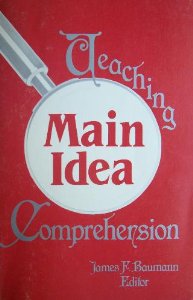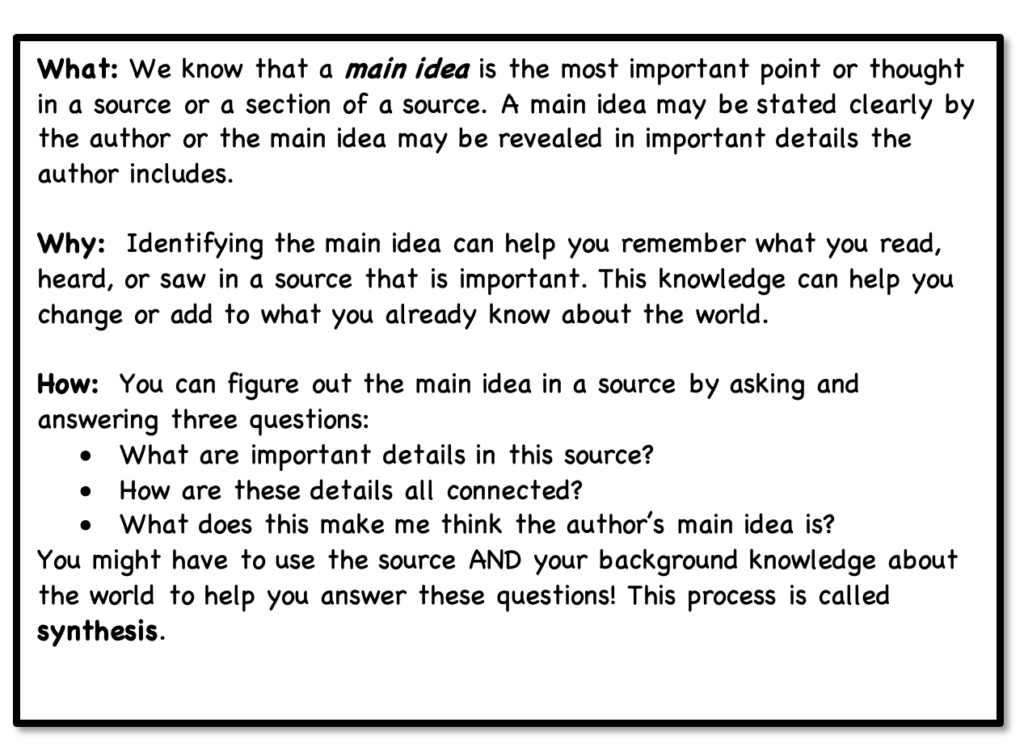
There are many interpretations of the term “main idea” or “central idea.” In my search for clarity, I have turned to the 1986 text Teaching Main Idea Comprehension, edited by Jim Baumann. (Sadly, this book is out of print.) In the first chapter, James Cunningham and David Moore describe research that revealed the many interpretations of “main idea” in the field by teachers, students, and in the professional literature on the topic. They explain main idea as “the general, umbrella term” and beneath that umbrella are “nine specific types” of main idea tasks:
- gist
- interpretation
- key word
- selective summary/selective diagram
- theme
- title
- topic
- topic issue
- topic sentence/thesis sentence
- other
In the end, main idea is a broad term for many people that encompasses a set of tasks or even skills that readers employ to make sense of sources. I’m not saying – let’s go out and teach these nine tasks, though. I corresponded with Cunningham via email and he replied (regarding his and Moore’s current views) – “We’re not wedded to the notion that we captured exactly the right set of variations of the main idea, though” (12/16/2013, personal email). This importance of this research is that it reveals why our students may need more clarity when we ask them to identify the “main idea” in a passage. I started by defining for myself what a few of these terms mean.
Theme
When I ask students to “synthesize the ideas in informational source,” I’m asking them to focus on the theme of the text, infographic or video clip. (For me “theme” is synonymous with “main/central idea”). Cunningham and Moore (1986) define theme as “a generalization about life, the world, or the universe that the passage as a whole develops, implies, or illustrates but which is not topic or key word specific” (p. 7). An example of a theme in an excerpt from the book Marching for Freedom (Partridge, 2009) is “perseverance is an important element in effectively pursuing change.”
Gist
The theme is different than the gist which Cunningham and Moore describe as “a summary of the explicit contents of a passage achieved by creating generalized statements that subsumed specific information and then deleting that specific (and now redundant) information” (p. 6). So the gist of the previously mentioned excerpt from Marching for Freedom might be “In the early 60’s, in Dallas County, Alabama, civil rights activist like Amelia Boynton pursued helping African Americans register to vote despite obstacles like unfair literacy tests administered by government agencies and physical intimidation by opponents.”
Main/Central Idea
What’s important here is we need to be very clear about what we mean when we ask students to identify a “main idea.” In the new edition of Close Reading of Informational Sources (2019), I include this chart as a way to make clear for students what we are talking about when we introduce main idea.

Hope this helps.
S
UPDATED 2/17/2021
